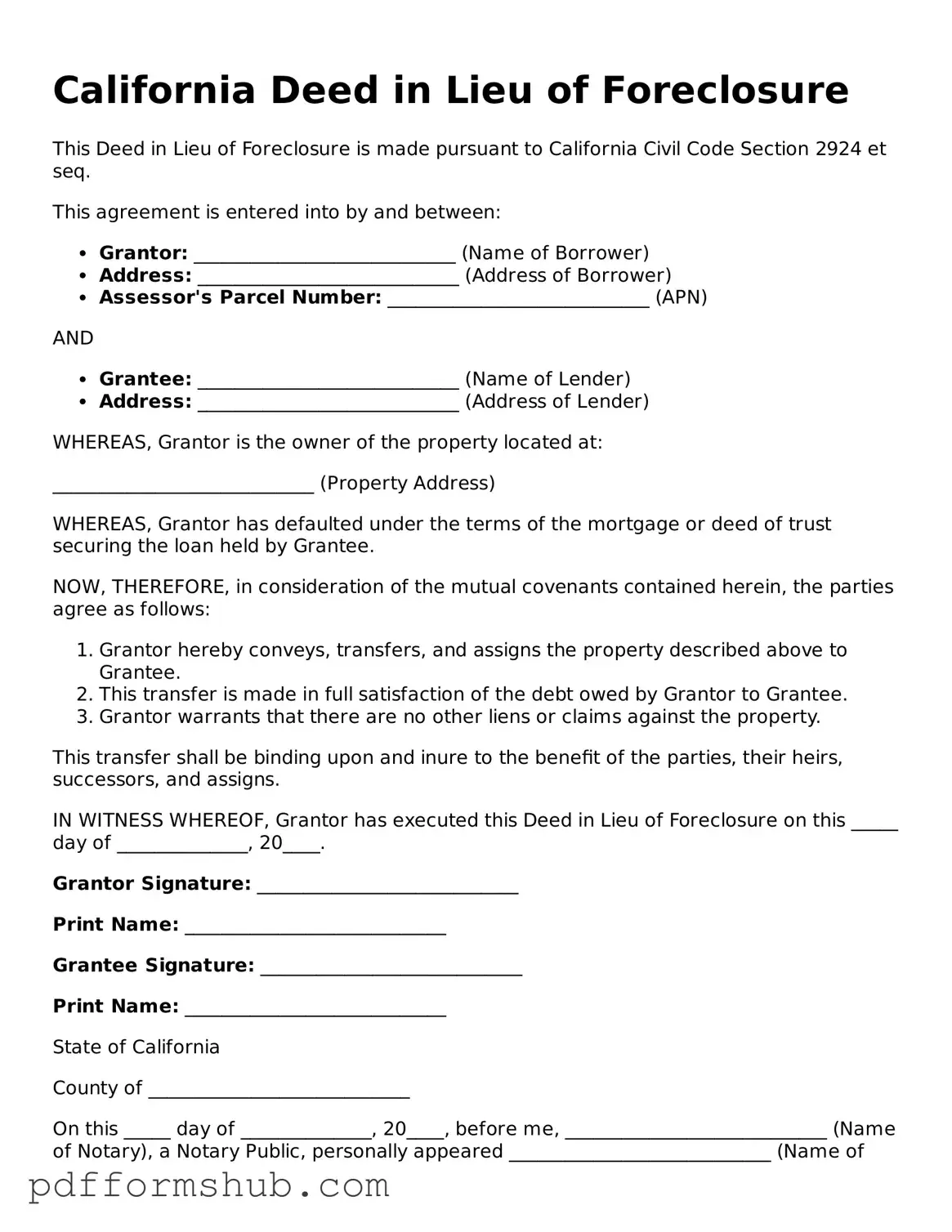Attorney-Verified Deed in Lieu of Foreclosure Form for California State
A Deed in Lieu of Foreclosure is a legal document that allows a homeowner to transfer the title of their property to the lender in order to avoid the lengthy and often stressful process of foreclosure. This option can provide a more amicable resolution for both parties involved, allowing the homeowner to walk away from their mortgage obligations while the lender takes possession of the property. If you’re considering this option, it’s essential to understand the implications and process involved.
To begin, fill out the form by clicking the button below.
Customize Form
